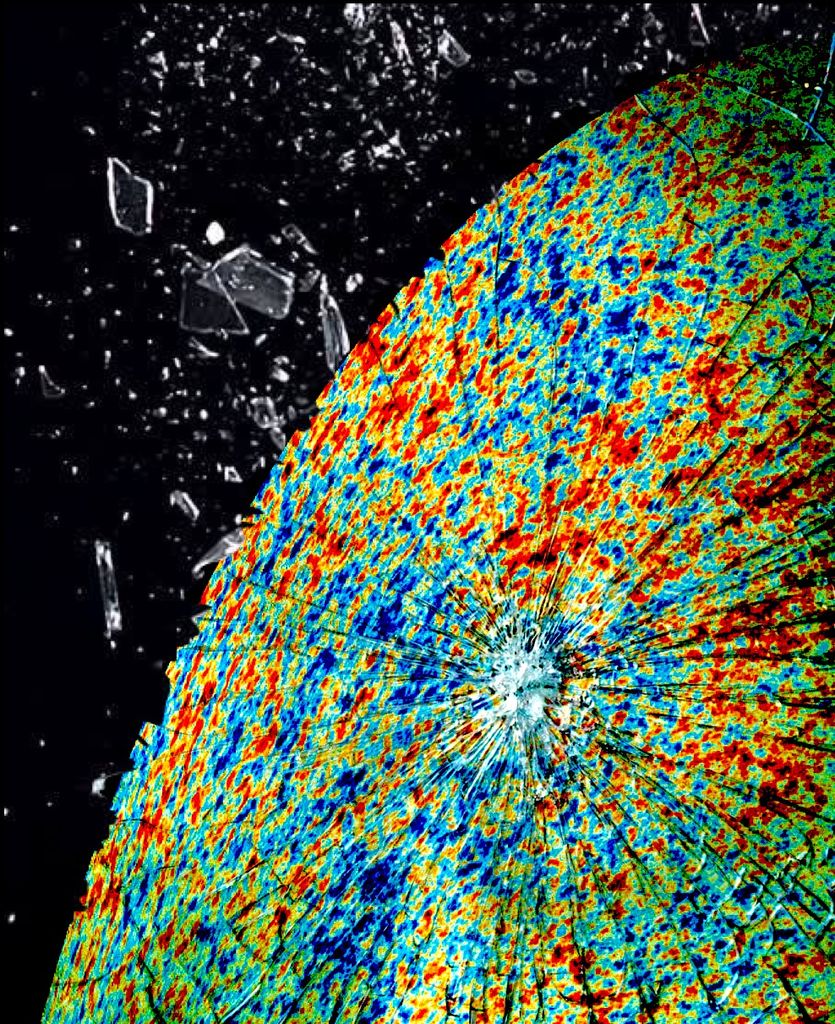
A Cosmological Revolution: Is the Universe Really Flat?
Currently, the most accredited model of our universe – one that has brilliantly passed a wide number of experimental tests – follows an infinite expansion that started from the primordial Big Bang. One of the fundamental predictions of this model is that the spatial geometry of our Universe is Euclidean: the universe is “flat.”
Euclidean geometry is the geometry we experience in everyday life and that we all studied at school. In this geometry, two parallel lines will never meet and the sum of the internal angles of a triangle is exactly 180 degrees.
General Relativity, however, indicates the possible existence of different geometries. In General Relativity, matter influences the geometry of the space that contains it. In this context, if we consider cosmological distances of billions of light-years, geometry may indeed not be Euclidean.
One way to measure such a geometry is through accurate observation of the anisotropies of cosmic background radiation. These anisotropies, which formed billions of years ago, have practically crossed the entire universe, and their shape can help us to verify the Euclidean geometry hypothesis.
The BOOMERANG Experiment and the WMAP Satellite have produced extremely accurate maps of the anisotropies of cosmic background radiation, revealing good compatibility for the hypothesis of the universe’s flatness and confirming the predictions of the standard cosmological model.
However, a recent analysis of the data obtained by the Planck Satellite performed by an international team lead by Alessandro Melchiorri has significantly improved the previous measurements. The latter, however, do not reveal a flat, but rather a “closed” universe. In this case, Euclidean geometry is no longer valid. As on the surface of a sphere, two parallel lines will meet, and the inner angles of a triangle add up to more than 180 degrees. Thus, we may be trapped on the surface of a three-dimensional sphere. And consequently, if we were to traverse a cosmological distance in a straight line and at the speed of light, we could return to our starting point.
This has enormous implications from a cosmological point of view, but Prof. Melchiorri’s analysis goes even further. If the universe is closed, this also poses a problem for the Planck measurements and recent surveys of galaxies such as BOSS. Both of these measurements provided compatible values for the abundance of matter and the value of the Hubble Constant of a flat Universe.
However, if the universe is closed, this no longer stands true and leads to a crisis of our cosmological model. In practice, we no longer have a model that explains all of our observations.
“The new data obtained by the Planck Satellite,” explains Alessandro Melchiorri, corresponding author of the study,” reveal that the universe is only 4% more curved than we thought. This percentage, however, is sufficient to create a discordance with all other astrophysical observations, revealing tensions and differences.”
The discovery of anomalies has often led us to revolutionize our concept of the universe. For example, the elliptic orbit of Mars led to Newton’s Law of Gravitation and the anomalous precession of perihelion on Mercury led to general relativity.
“Obviously, there still is the possibility that a systemic effect that we have not yet uncovered causes the discrepancies in our observation,” states Prof. Melchiorri. “Future experiments on anisotropies, such as the Simons Observatory, will solve the conundrum. In the meantime, the door for a cosmological revolution appears to be open, and upcoming experiments may bring even more exciting results.”
References:
Planck evidence for a closed Universe and a possible crisis for cosmology - Eleonora Di Valentino, Alessandro Melchiorri & Joseph Silk - Nature Astronomy (2019) DOI https://doi.org/10.1038/s41550-019-0906-9
Further Information
Alessandro Melchiorri - alessandro.melchiorri@uniroma1.it
Department of Physics
